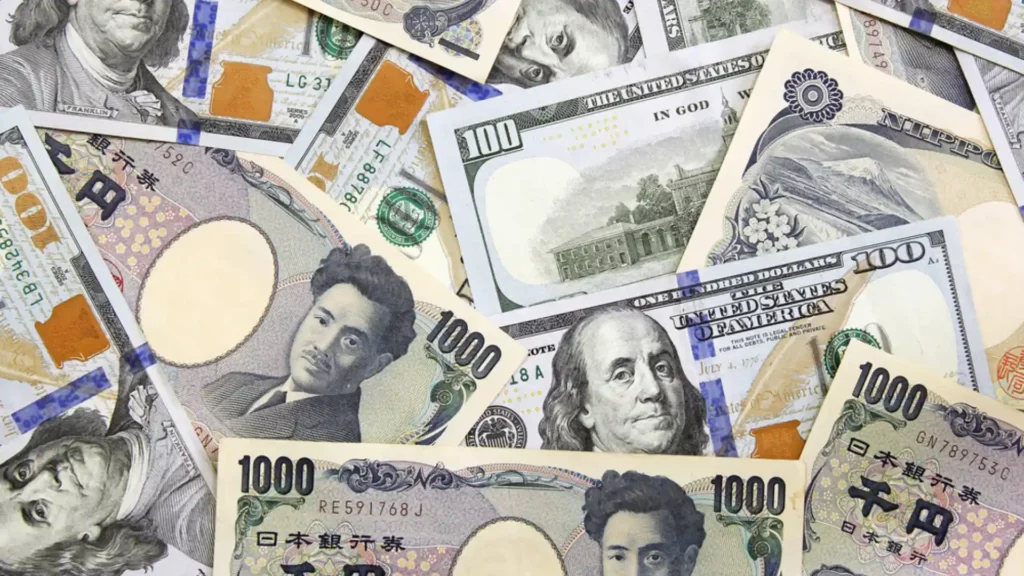Wall Street’s stumble overnight is sending shockwaves across the markets.
The Asian financial markets are reacting to the latest US inflation figures and Wall Street’s stumble overnight is sending shockwaves across the markets. Investors are adjusting accordingly, changing their strategies amidst uncertainties surrounding Federal Reserve policies and global economic outlooks.
The persisting inflation will decide how much the Federal Reserve will ease this year. As a result of all this, the US dollar had soared to a 34-year high against the struggling yen. The US stock futures on the other hand slipped further and lost around 0.2% following a 1% decline in the previous session. The regional bonds had faced downward pressure, intensified by a 20-basis-point surge in Treasury yields overnight to their highest points since November.
MSCI’s broadest index of Asia-Pacific shares outside Japan suffered a 0.7% decline. Japan’s Nikkei also dropped 0.8%. Hong Kong’s Hang Seng fell 1.1% while China’s Blue chips fell 0.4%. Disappointing consumer price data from China added to the gloom, further reducing market sentiment.
Market Turbulence
The US inflation figures from March surpassed the expectations. Core Consumer Price Index (CPI) furthered by 0.4%. This exceeds forecasts and diminishes prospects for a rate cut in June. The Federal Reserve’s minutes revealed concerns among officials regarding stalled inflation progress, generating a revision of the timing and extent of future monetary policy adjustments.
Investors were hopeful about the Federal Reserve easing its monetary policies but due to the present market uncertainties the future is foggy. Estimates for total easing in 2024 were modified downwards to just 42 basis points. This rate is well below the Fed’s forecast of 75 basis points. The possibility of no rate cuts this year increased significantly. All these events point to a changing market and economic dynamics.
The upcoming central bank meetings and data releases will be closely monitored by investors as they expect further changes that change the market trends. The European Central Bank’s policy meeting and the United States producer price data are much anticipated, and experts await announcements regarding future policy directions. The European Central Bank, however, is expected to maintain borrowing costs at record highs. Theories and rumors regarding the potential rate cuts in the near future are also on the rise.
The Bank of Canada on the other hand has opted to keep the interest rate unchanged. Governor Tiff Macklem had hinted at the possibility of June rate cuts if the current inflation rates persist. Tiff Macklem’s comments also shed light on the nuanced approach central banks are taking in these times of economic vagueness.
The possibility of a rate drop in June was severely reduced when data released overnight revealed that U.S. inflation in March again exceeded forecasts. The 0.4% gain in the core CPI was higher than the 0.3% increase predicted.
The Federal Reserve‘s overnight released minutes also revealed that officials had started to express concerns about the potential stalling of inflation before the release of the March inflation statistics, with some speculating that the current policy rate might not be stringent enough.
The currency markets also saw sudden movements with the dollar soaring to a five-month high against other currencies. Japan’s yen weakened which caused warnings from the Japanese authorities, implying readiness to intervene in currency markets if necessary.
Asian bonds continued to decline amid the market turbulence, with rates on Australian and Japanese government bonds hitting multi-month highs. But U.S. Treasuries steadied, providing some relief from the turbulence.
Oil prices continued to rise in the commodities market as a result of geopolitical unrest caused by an Israeli strike. Further delays are expected to truce discussions propelled both Brent and U.S. crude prices higher. U.S. crude was 0.1% higher at $86.35 per barrel and Brent rose 0.1% to $90.62 a barrel.
Gold prices gained 0.3% to $2,338.79 per ounce, having lost 0.8% overnight in the face of a strong U.S. dollar.
